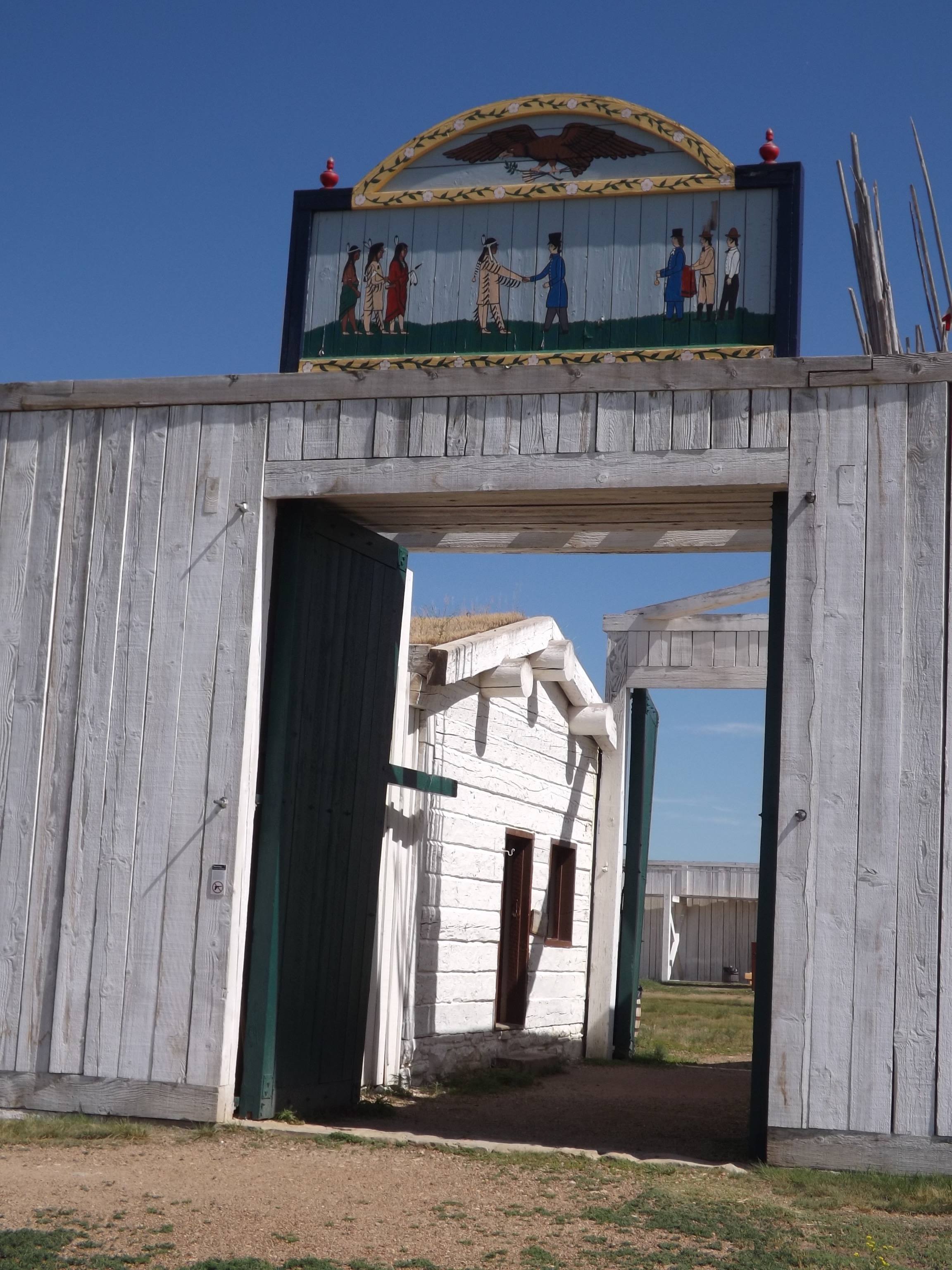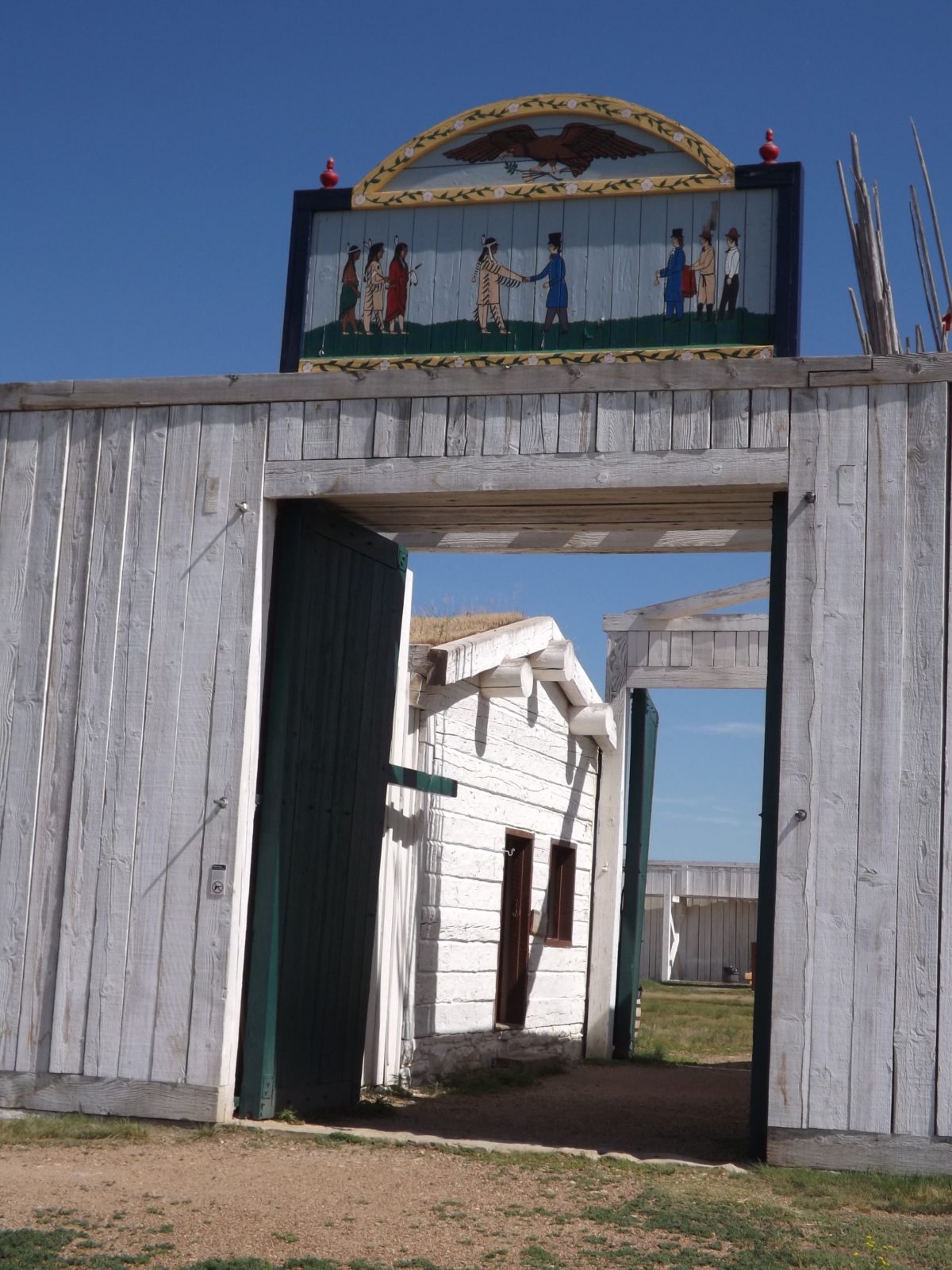A remote outpost: Fort Union Trading Post National Historic Site
As a continuation of our theme; talking about some of the national park units that are a little more remote or off-the-beaten path, we got to thinking about Fort Union Trading Post National Historic Site, straddling the border of Montana and North Dakota.
Not to be confused with Fort Union National Monument in New Mexico, guardian of the Santa Fe trail; Fort Union Trading Post was not a military outpost. It was a fur trading post; in fact, it was one of the most important fur trading posts on the upper Missouri River.
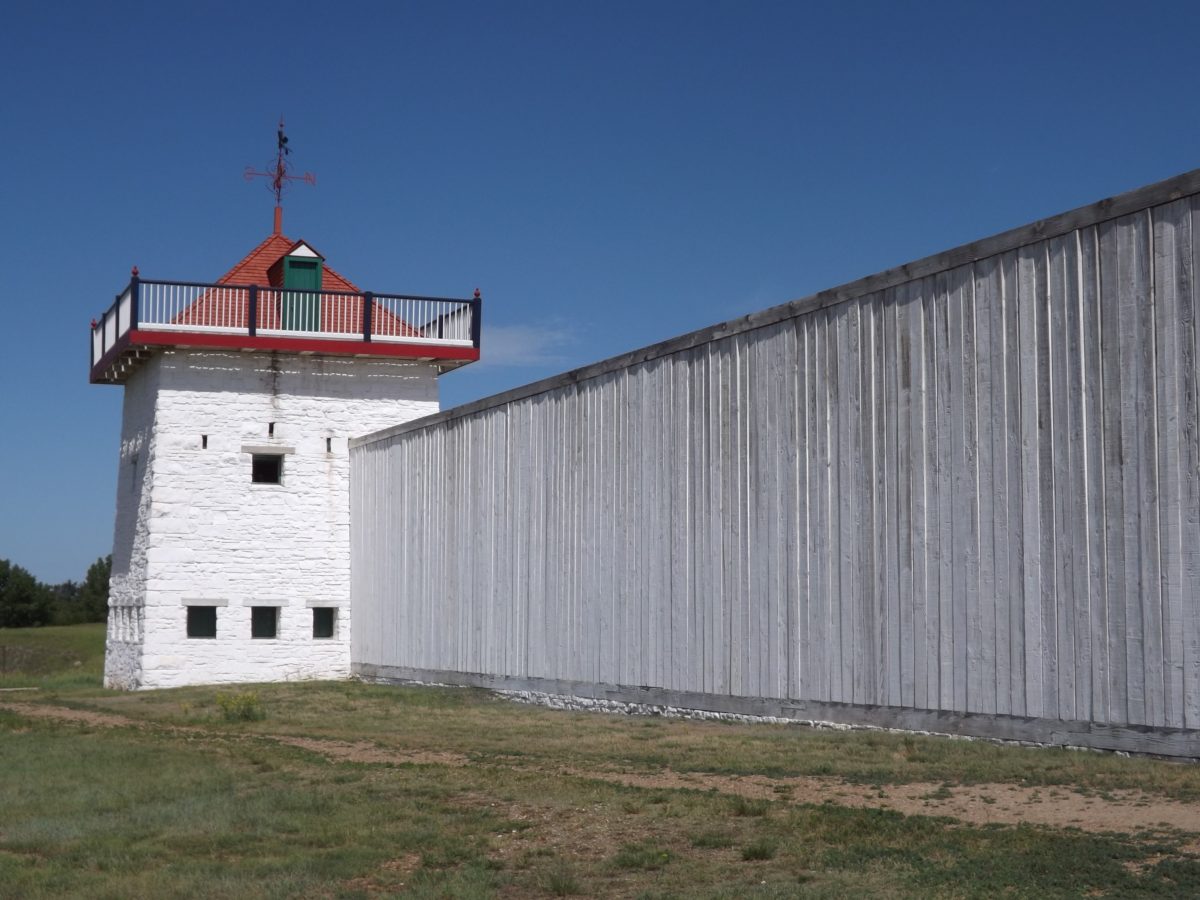
Were is Fort Union Trading Post?
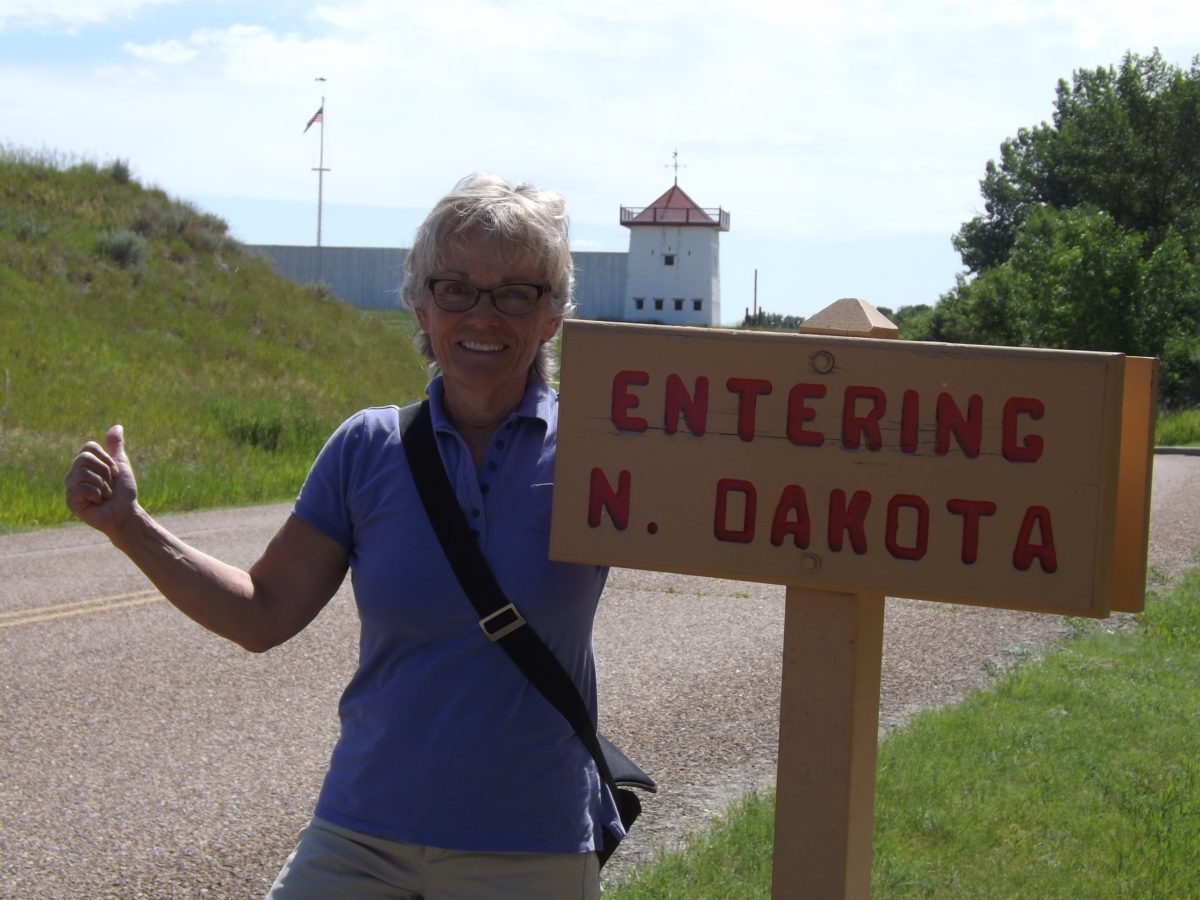
Williston, North Dakota, and Sidney, Montana, aren’t exactly household words, but those are the closest towns. So really, the trading post isn’t really anywhere close to anything.
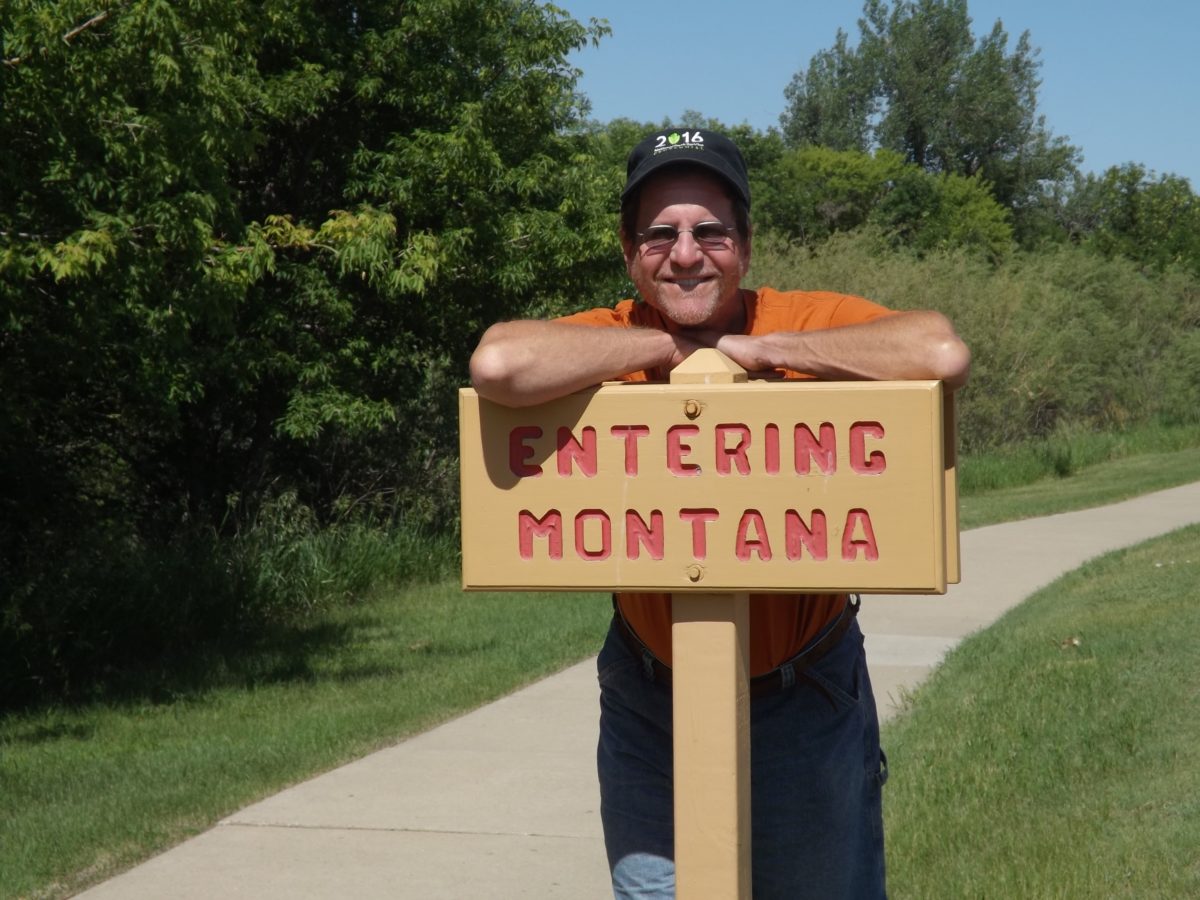
But we learned that in the early 1800’s, this trading post was at a key location on the Missouri River – the northern terminus of a water highway that began 1800 miles away in St. Louis. Initially, keel boats took 6 months to make their way up river full of trade goods, only to return with a boat load of furs. It became an even more important location once steamboats arrived in 1832, and remained a thriving trading post until after the civil war.
They traded over 25,000 buffalo robes and $100,000 in merchandise annually. That’s almost three million dollars in today’s money! That was a pretty robust business.
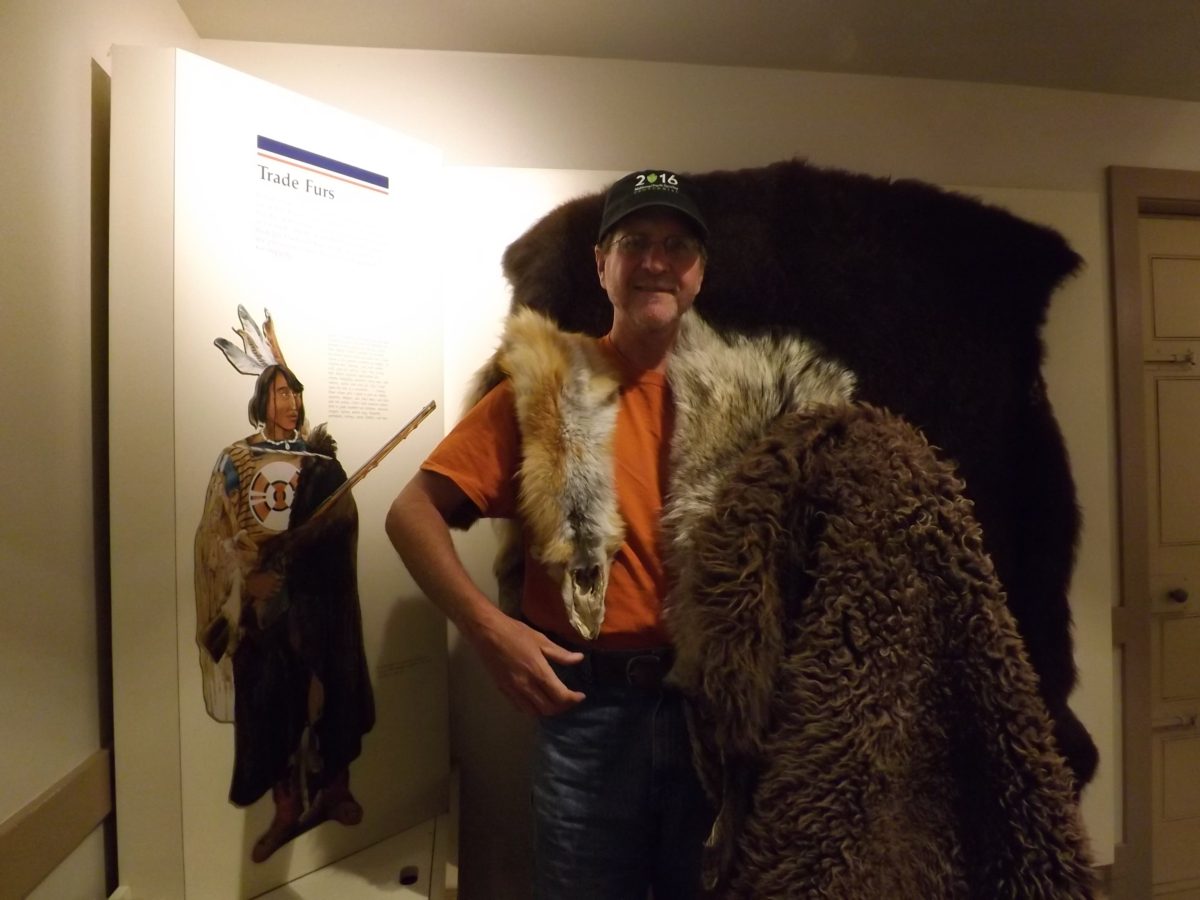
What happened at Fort Union Trading Post?
Fort Union Trading Post was a gathering place for plains indians and traders. They would bring buffalo, beaver and otter hides to trade for a variety of trade goods – knives, pots, cups, tools and beads. Unlike the stories we have all heard of the tensions between whites and indians, it sounded like this was a peaceful place. They employed as many as 100 people, and there were many social interactions with the local Indians, including intermarriage.
This tranquility lasted for almost 60 years, until after the Civil War when more and more whites moved west and Indians were forced off their lands into reservations.
What is there to see at Fort Union Trading Post?
Driving up to the fort is a pretty cool experience. You drive across undulating plains and then there it is – a big square fort that seems to just pop out in the middle of nowhere.
The main thing we did at Fort Union Trading Post was to take a self-guided tour. We explored the fort and walked the grounds. The fort enclosed a very large area and you could just picture the hustle and bustle of the families who lived inside the walls, and the Indians camped outside.
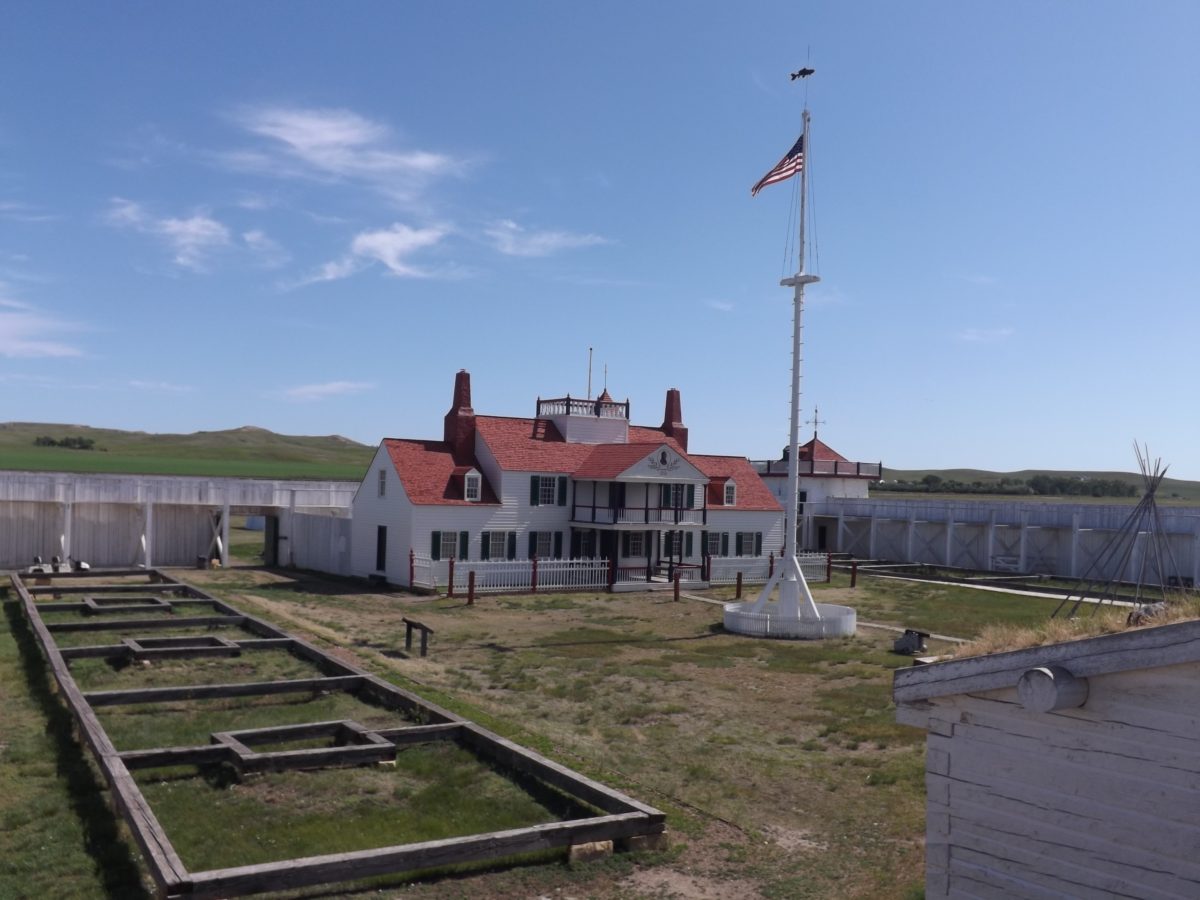
We spent some time wandering through the “Bourgeois” house; this was where the head of the fort lived and his formal title was “bourgeois”. It is interesting how these places were a mix of French and English traditions and terms.
A highlight of our tour was the “Trade House”. This was really the center of activity at the fort, where the indians and traders brought their pelts, and the clerks tallied up their value and trade. There was also a little window where sometimes they would conduct business, without letting anyone inside. The “trader” there was really informative. He showed us all the different goods they traded and told us the price in furs for each thing.
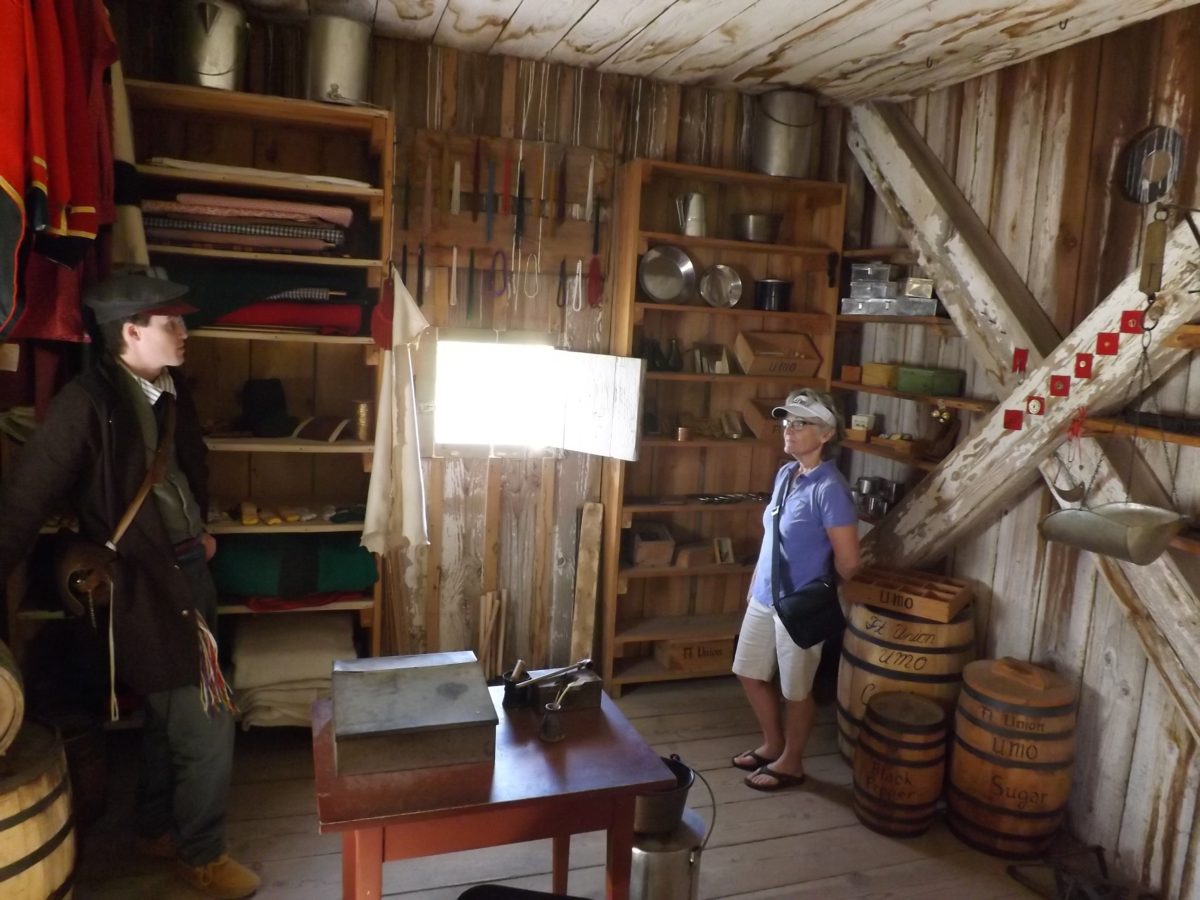
Depending on when you go, there are lots of people demonstrating different aspects of day-to-day life at the fort – clerks, traders, indians. There are seasonal living history programs and special guided tours, and each year they host a “Rendevous” that celebrates history with re-enactors wearing traditional clothes and demonstrating traditional skills, plus special speakers and other fun activities. It was a bit quieter when we went, but this sure sounds like fun! We might have to go back!
Fort Union Trading Post National Historic Site
Established in 1966 to preserve an important part of the history of the American West, this National Historic Site is well worth the detour, especially if your travel plans are taking you to Theodore Roosevelt National Park (a gorgeous place with tons of bison!). When there, you can also visit Knife River Indian Villages National Historic Site to learn a bit more history.
Many folks don’t think of a vacation in North Dakota and Montana, but it is a beautiful region of the country with lots of history.
